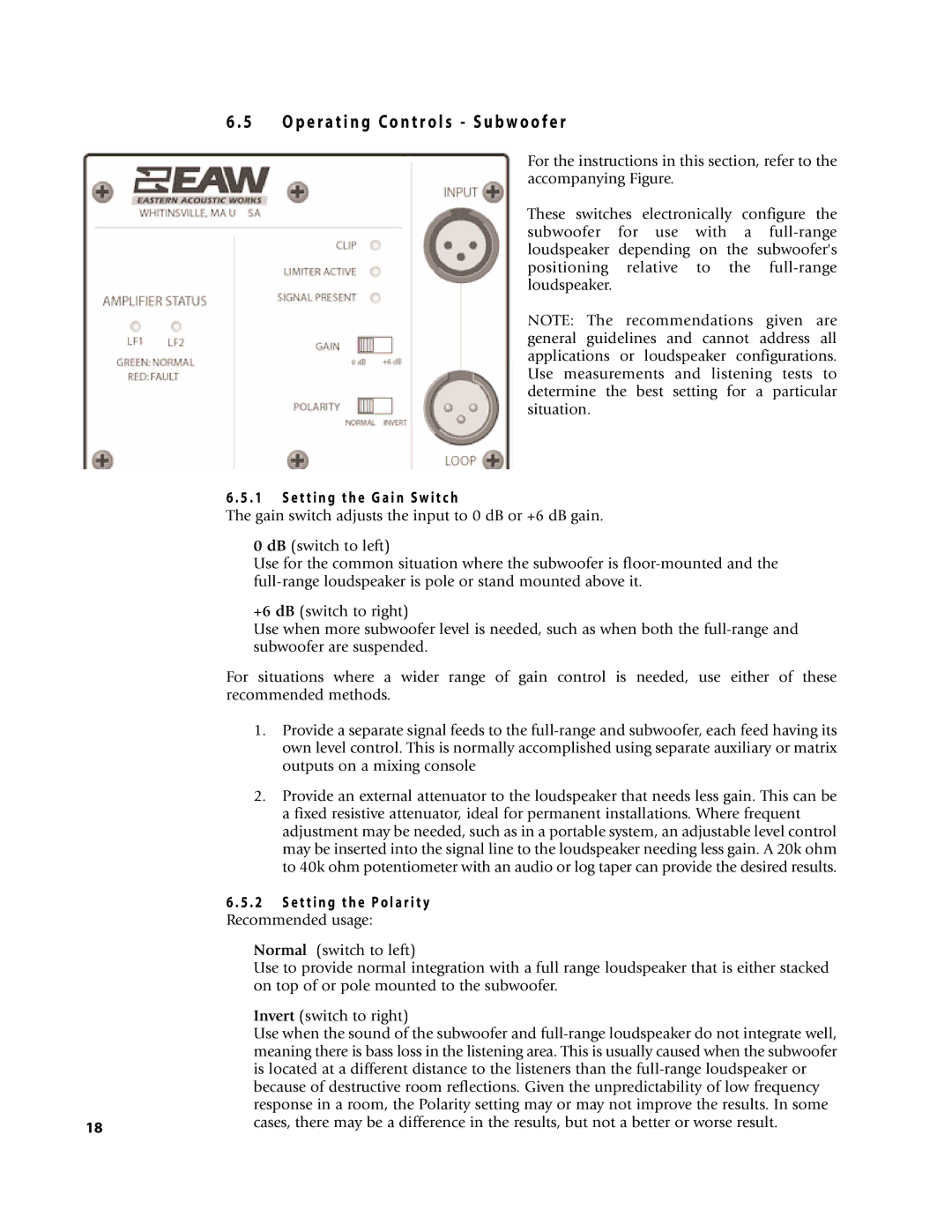
6 . 5 O p e r a t i n g C o n t r o l s - S u b w o o f e r
For the instructions in this section, refer to the accompanying Figure.
These switches electronically configure the subwoofer for use with a
NOTE: The recommendations given are general guidelines and cannot address all applications or loudspeaker configurations. Use measurements and listening tests to determine the best setting for a particular situation.
6 . 5 . 1 S e t t i n g t h e G a i n S w i t c h
The gain switch adjusts the input to 0 dB or +6 dB gain.
0 dB (switch to left)
Use for the common situation where the subwoofer is
+6 dB (switch to right)
Use when more subwoofer level is needed, such as when both the
For situations where a wider range of gain control is needed, use either of these recommended methods.
1.Provide a separate signal feeds to the
2.Provide an external attenuator to the loudspeaker that needs less gain. This can be a fixed resistive attenuator, ideal for permanent installations. Where frequent adjustment may be needed, such as in a portable system, an adjustable level control may be inserted into the signal line to the loudspeaker needing less gain. A 20k ohm to 40k ohm potentiometer with an audio or log taper can provide the desired results.
6 . 5 . 2 S e t t i n g t h e P o l a r i t y Recommended usage:
Normal (switch to left)
Use to provide normal integration with a full range loudspeaker that is either stacked on top of or pole mounted to the subwoofer.
| Invert (switch to right) |
| Use when the sound of the subwoofer and |
| meaning there is bass loss in the listening area. This is usually caused when the subwoofer |
| is located at a different distance to the listeners than the |
| because of destructive room reflections. Given the unpredictability of low frequency |
| response in a room, the Polarity setting may or may not improve the results. In some |
18 | cases, there may be a difference in the results, but not a better or worse result. |
|
